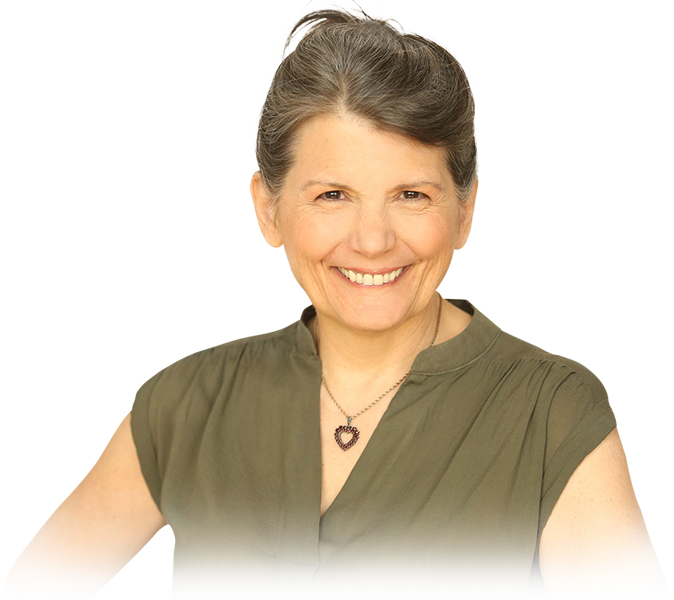When I first started working with practitioners, I talked a lot about marketing. I even called what I taught Awareness Through Marketing, so probably it wouldn’t surprise you if I said that you need to market in order to build a practice.
What might surprise you is that I think for a lot of practitioners, marketing is a waste of time and money. Not to mention mental energy and angst.
Why?

There are many parts to the answer, but the most important is that what most practitioners need is more clients who are committed to getting help, and that’s not what marketing gets you.
Marketing is how you help people realize they want to find out more about you—the people you can help the most… the ones who are right for your practice and who have the problem you are known for solving.
In other words, the purpose of marketing is to get the people you’re here to help interested in you. It’s a SERVICE to them that allows them to find what they need.
That’s why marketing experts, coaches and gurus put so much focus on picking a niche, branding, writing blog posts, speaking to groups, networking, building a website, staying present on social media—all sorts of ways to raise awareness of your work so that you attract the people who need your help.
Although a marketing expert will tell you they’re not interchangeable, you probably think of marketing as being more or less synonymous with advertising… in other words, it’s about client attraction.
And that’s where the misunderstanding arises, because what most practitioners need is to get more clients to commit to working with them over time, and client COMMITMENT is about something entirely different than client ATTRACTION.
If you haven’t mastered the skills it requires, you are stuck with doing far too much of the least rewarding work in order to fill your practice
Let’s look at a practical case
To understand why, let’s look at how this plays out with a typical practitioner. We’ll call her Sally, and she wants to work with 20 people a week.
When she looks back at what’s been happening over the last couple of months, Sally discovers that 10 prospective clients came for a first session. I call them “prospective clients” because they haven’t committed to working with her yet, only to having that first meeting.
This is what happened after those 10 sessions:
- 1 person came about 3 times and then called to cancel her appointment. She said that she’d call Sally to reschedule–but she hasn’t done that and Sally is losing hope that she will.
- 7 were noncommittal. A couple said they couldn’t afford it. A few said they’d call but Sally doesn’t think they’re going to. One or two said they didn’t feel like anything changed, although Sally saw a big difference after their sessions.
- 2 people look promising–so far, one has come 7 times, the other has come 9 times. Sally feels like these clients are “getting it” and will continue.
So, Sally gave 10 first sessions and got two long-term clients.
Two out of ten is the same as 20/100, so this means that to get the 20 clients a week she wants in order to fill her practice, Sally is going to have to get about 100 prospective clients to come for a first session with her.
Now, your situation might be a little different. For example, if you look at your own practice and see that you get 4 long-term clients from your last 10 first sessions, you’ll probably have to give about 50 first sessions to get those 20 clients. In any case, I’m sure you can see how this works…
And you can also see how much work it is to fill your practice by relying on seeing so many people for the first time!
Just think for a moment about the whole process—from first talking with someone you don’t know yet, to watching them walk out the door after their appointment, to waiting for the phone to ring—and it will be easy to see why it would be much better to get 20 clients from 25 or 35 first sessions, than from 50 or 100.
Maybe you think that’s pie-in-the-sky…
Here’s the thing… even without marketing, I’ll bet that sometimes your phone rings, just like Sally’s did in our example. The real question that affects your practice is not “How many people can you attract?” but “How small is the number of new people you need to see in order to enroll enough of them to fill your practice?”
Viewed from this perspective, it’s easy to see that mastering the skills of client commitment and enrollment is critical to filling your practice. What you do to enroll people once they are interested, once they are calling you, once they decide to come for a first session with you is more important than attracting droves of people who are shopping.
Client commitment is about how you talk to prospective clients, what you talk about, how they see you in relation to what they need and how you deal with their objections.
It’s about the conversation you have with them, how you suggest having their first session, and what you do in that session to help them understand that you are the practitioner they’ve been looking for. None of this falls under the general heading of “marketing”—and you almost certainly were not exposed to it in your training, either, no matter what modality you practice.
The best role for marketing
I’m not saying marketing is unnecessary—I’m saying that on its own, it isn’t going to fill your practice and that’s why I say that it’s the wrong thing for most practitioners to focus on.
And it’s certainly the wrong thing to focus on if you are broadcasting to the world as an odious task you can’t avoid, instead of coming from service to raise awareness among the people you are uniquely designed to help.
To fill your practice, you must know how to enroll the people who are already calling you, already talking to you, already expressing interest in what you do.
When you see 10 new prospective clients for the first time, and 8 or more of them become long term clients, you can make good use of marketing to bring more people into closer contact with you so that you can increase the number of people you help.
When the majority of your prospective clients sign on for at least 10 sessions, marketing will make a noticeable difference. Over time, as your client commitment skills increase to the point of mastery, marketing will be more effective and less work than you can imagine, bringing more people into closer contact with you so that you can increase the number of people you help.
I created the Heart to Heart program so that you could master the art of enrolling clients. To learn more about how it could help you, your practice and the people you are here to serve, click here.
~~~~~
I write because I want it to be easier for you to build your practice that it was for me to build mine. If you want that too, subscribe below and I’ll send you articles, tips and opportunities to do what it takes.

